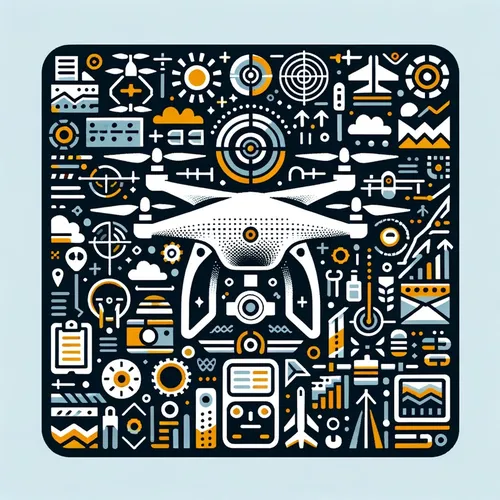Drones, Regs, and Riches: Soaring Secrets of Top Pilots Exposed!
- Author
- Quiet. Please
- Published
- Sat 09 Aug 2025
- Episode Link
- https://www.spreaker.com/episode/drones-regs-and-riches-soaring-secrets-of-top-pilots-exposed--67310596
This is you Professional Drone Pilot: Flight Tips & Industry Updates podcast.
Professional drone operators face an evolving landscape where technical mastery and business strategy go hand in hand. For those seeking to elevate their flying in commercial industries—whether in aerial photography, inspection, or facility management—fine-tuning your manual and autonomous flight skills remains foundational. According to Uncrewed Aviation, top pilots today master both hands-on stick work for tight spaces and robust programming for waypoint-driven autonomous missions, with emergency maneuvers and weather adaptability being critical for safety and success. Maintaining this expertise requires not just routine flying but structured drills: always practice nuanced launches and landings in open, debris-free areas and develop muscle memory for controlling drones facing you, where controls are reversed. As noted in a recent video from June twenty twenty-four, regularly exercising these protocols can prevent costly crashes.
Optimizing your hardware through predictive, sensor-driven maintenance is essential as fleets grow more high-tech. Archivemarket Research recently reported that artificial intelligence-powered condition monitoring is becoming standard, allowing pilots to anticipate issues before they ground operations. The drone maintenance sector is seeing a steady annual growth rate of five percent, fueled by demand for sustainability and minimized downtime. Paired with this, using management platforms like Airdata UAV streamlines workflows by automating maintenance alerts, logging pilot credentials, and ensuring regulatory compliance, a must as airspace rules evolve.
Speaking of business, opportunities continue to expand with service models pivoting to flexibility and cost savings. DroneFly’s market overview highlights that modular drones—where payloads swap out for new jobs—help firms offer diverse services with less overhead, crucial for winning larger contracts or tackling new verticals like cleaning or security. Lucid Bots projects rapid expansion in drone cleaning, driven by advanced navigation and more open regulatory frameworks. For those considering entering this segment, evaluating insurance options remains vital. With insurance products now tailored to things like high-rise facility work, piloting without comprehensive coverage is riskier than ever.
Staying compliant means keeping pace with licensing updates. Regulators are moving toward more streamlined certification, especially for beyond-visual-line operations, creating growth avenues for pilots who invest in continuing education. For client relations, market data points to growing demand for result-driven pricing—consider value-based bids or retainer agreements for inspections and mapping to stay competitive. Always deliver clear post-flight reports, using automated fleet management tools to add professionalism.
Looking ahead, automation, artificial intelligence, and service diversification will deepen, prompting pilots to diversify skills and offerings. Staying agile and informed about tech and regulatory shifts will define the future’s most successful pilots. Thank you for tuning in today and be sure to come back next week for more insights. This has been a Quiet Please production; for more, check out Quiet Please Dot AI.
For more http://www.quietplease.ai
Get the best deals https://amzn.to/3ODvOta
